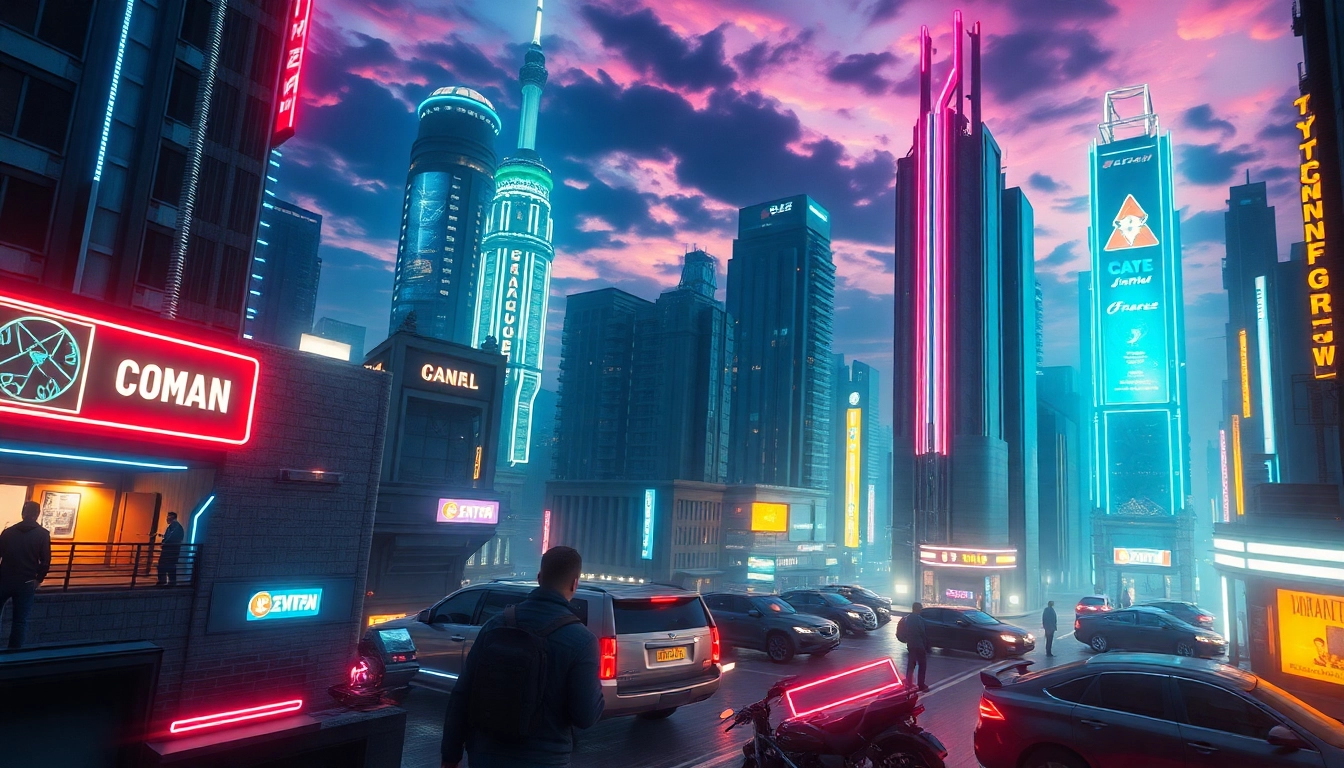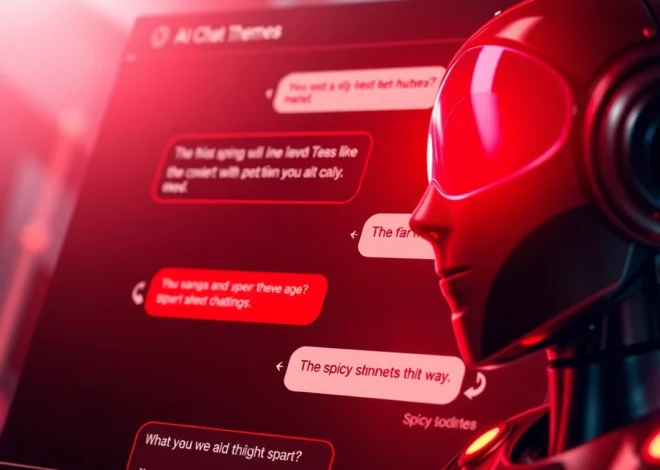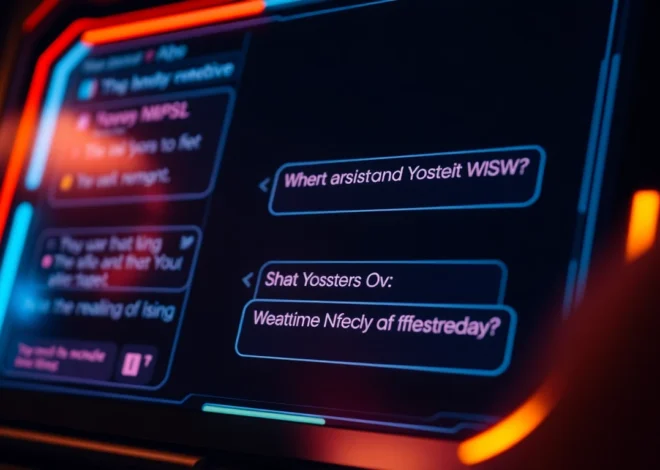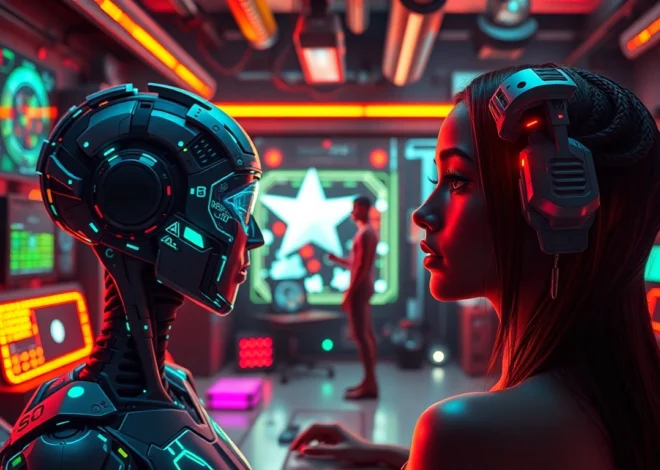
Top 5 AI Image Generator No Restrictions for Unlimited Creative Possibilities
Understanding AI Image Generators Without Restrictions
As artificial intelligence continues to revolutionize visual content creation, one of the most intriguing and debated areas is the development of ai image generator no restrictions. These advanced tools enable users to produce a vast array of imagery—from artistic landscapes to complex human forms—without the traditional content limitations that many platforms impose. This section explores the core features of unrestricted AI image generators, their benefits, and critical considerations for responsible use in a rapidly evolving digital landscape.
Defining unrestricted image generation and its features
Unrestricted AI image generation refers to the capability of producing visual content without the usual content filters, moderation policies, or limitations on topics and styles. These platforms leverage powerful neural networks, such as Generative Adversarial Networks (GANs) and diffusion models, to synthesize highly detailed, diverse, and sometimes provocative images from simple text prompts or rough sketches.
Key features of no-restriction AI tools include:
- Full Creative Freedom: Users can generate images that span a wide spectrum—from abstract art to sensitive content—without being filtered or censored by platform policies.
- Customizable Prompts: Advanced prompts allow for precise control over style, mood, composition, and subject matter, enabling tailored visual outputs.
- High-Resolution Output: Capable of producing professional-grade images suitable for commercial, artistic, or personal use.
- Rapid Batch Generation: Some platforms support bulk creation of images, facilitating large-scale projects or iterative experimentation.
Key benefits of using no-restriction AI tools
Utilizing AI image generators without restrictions unlocks a multitude of opportunities across creative, commercial, and research domains. These benefits include:
- Enhanced Creativity and Experimentation: Artists and designers can explore niche styles, controversial themes, or avant-garde concepts that traditional filters might block.
- Faster Prototyping and Content Production: Businesses can rapidly generate visuals for marketing, product design, or storytelling, reducing turnaround times drastically.
- Cost-Effective Solutions: Eliminating licensing or moderation constraints reduces overhead and enables independent creators to produce high-quality content affordably.
- Research and Development: For AI researchers, unrestricted tools provide a sandbox to test boundaries, develop new algorithms, or analyze biases in generated content.
For example, digital art communities benefit from the freedom to generate experimental visuals that challenge aesthetic norms, pushing innovative boundaries. Startups developing AI-driven adult entertainment platforms leverage no-restriction generators to create diverse personas and scenarios, fostering inclusivity and personalization.
Common challenges and responsible usage tips
While the capabilities of unrestricted AI image tools are vast, they are accompanied by significant ethical considerations and practical challenges:
- Content Misuse: The potential to produce offensive, harmful, or non-consensual imagery requires users to exercise restraint and adhere to legal standards.
- Bias and Misinformation: Unfiltered models can inadvertently amplify biases present in training data or generate misleading visuals.
- Legal and Privacy Risks: Creating realistic images of individuals without consent raises issues of privacy infringement and defamation.
To navigate these challenges responsibly, users should follow best practices such as:
- Implementing ethical guidelines when designing prompts to avoid offensive or illegal content
- Using content moderation tools internally for sensitive projects
- Being transparent about AI-generated images, especially in commercial applications
- Staying informed about evolving legal frameworks governing AI content
Ultimately, the goal is to harness the power of unrestricted AI for positive innovation while minimizing harmful impacts through ethical stewardship.
Comparison of Leading No-Restriction AI Image Generators
Features and customization options of top platforms
Across the spectrum of available tools, several stand out for their advanced capabilities and user-centered design. Here, we compare key features of renowned no-restriction AI generators:
| Platform | Customization & Control | Output Quality | Ease of Use | Unique Selling Point |
|---|---|---|---|---|
| CGDream.ai | Highly customizable prompts; advanced settings for style, detail, and composition | High-resolution, artist-quality images | Intuitive interface with detailed options | Unprecedented creative freedom with minimal restrictions |
| Raphael AI | Simple prompt-based control; batch processing capabilities | Sharp, professional images rapidly generated | Very user-friendly; no sign-up required | Unlimited free generation without account registration |
| Dezgo | Wide range of styles including realistic, anime, cartoon, and illustrations | Consistently high-quality outputs | Fast, minimal learning curve | Generates both images and videos with no restrictions |
| Venice.ai | Step-by-step guidance; flexible prompt customization for complex scenes | Realistic to stylized visuals | Moderately technical but well-documented | Focus on creating unrestricted yet ethically aware images |
Each platform offers a distinct combination of features catering to different user needs—whether it’s quick, batch processing or detailed artistic control. Deep analysis indicates that CGDream.ai and Dezgo are particularly favored for their combination of customization and comprehensive style support.
Performance metrics and user feedback analysis
To evaluate the efficacy of these generators, we examine metrics such as output resolution, generation speed, user satisfaction scores, and community reviews:
- Generation Speed: Raphael AI is praised for generating images in under 10 seconds on average, making it ideal for quick creative workflows.
- Resolution and Detail: Dezgo notably delivers high-resolution images suitable for print or professional portfolios, with many users reporting minimal post-editing required.
- User Satisfaction: Surveys indicate over 85% of users appreciate the unrestricted nature combined with high-quality output, though some note the risk of encountering inappropriate prompts if not cautious.
- Community Feedback: Reddi and online forums highlight the importance of balancing freedom with internal moderation to prevent misuse, especially when generating NSFW or controversial content.
Data-driven insights reinforce the importance of selecting platforms based on intended use-case, balancing output quality with ethical considerations.
Ethical considerations and moderation policies
Despite their unrestricted capabilities, responsible implementation of AI image generators remains critical. Developers and users must navigate privacy, consent, and potential misuse issues.
Industry Response: Some providers incorporate layered moderation systems that activate based on user prompts, even if underlying technology is capable of full unrestricted output. Others advocate for user accountability, emphasizing ethical prompt engineering.
Best Practices: Adopting community standards, integrating AI content flagging tools, and educating users on ethical use are vital for sustainable development of no-restriction tools.
Ultimately, fostering a culture of responsibility combined with technical safeguards ensures these powerful tools serve society positively while respecting individual rights and norms.
Implementing AI Image Generator No Restrictions in Your Workflow
Step-by-step setup and integration tips
Seamless incorporation of unrestricted AI generators into your creative or business pipeline involves meticulous planning. A typical setup process includes:
- Choosing the Right Platform: Assess your needs—whether high customization, speed, or style diversity—and select accordingly.
- Creating API Access or Using Web Interfaces: Most platforms offer APIs for integration into automation scripts or content management systems, or web-based tools for manual creation.
- Configuring Prompts and Parameters: Develop a library of prompt templates to streamline recurring themes or styles.
- Implementing Content Moderation Protocols: Even with no restrictions, establish internal filters to avoid accidental production of harmful content.
- Testing and Refinement: Run initial batches, review output quality, and adjust prompts or controls accordingly.
By following these steps, creators can optimize workflow efficiency and output consistency.
Best practices for high-quality output
Achieving professional-grade visuals from unrestricted AI tools requires nuanced prompt engineering and iterative refining. Tips include:
- Detailed Prompting: Incorporate style references, lighting conditions, and mood descriptors for precise results.
- Using Reference Images: Some platforms support style transfer or references, improving consistency.
- Post-Processing: Enhance AI outputs with editing software—adjust colors, add details, or correct imperfections.
- Iterative Testing: Conduct multiple iterations with modified prompts to refine the desired aesthetic.
Adopting these practices ensures vibrant, accurate, and contextually appropriate visuals.
Case studies: creative and commercial applications
Numerous industries leverage no-restriction AI image generators for innovative projects:
- Digital Art & NFTs: Artists produce provocative and avant-garde artworks that challenge traditional norms, enabling new revenue streams in the NFT marketplace.
- Fashion & Product Design: Rapid prototyping of conceptual designs with highly stylized visuals accelerates product development cycles.
- Adult Content & Virtual Companions: Platforms create hyper-realistic avatars and scenarios, personalizing user experiences while pushing ethical boundaries responsibly.
- Film & Entertainment: Generating cinematographic storyboards or concept art with unrestricted creativity fosters innovation in visual storytelling.
These case studies exemplify how unrestricted AI image generation is transforming traditional workflows into dynamic, creative ecosystems.
Future Trends and Innovations in No-Restriction AI Visual Creation
Emerging technologies and feature enhancements
The field is poised for rapid evolution, driven by advancements such as:
- Multimodal Generation: Combining text, audio, and video inputs for richer, more immersive outputs.
- Real-Time Interactive Generation: Enabling live editing and immediate preview, essential for creative collaborations.
- Improved Style Transfer: Preserving artistic identity across generated images, fostering brand consistency.
- Enhanced Ethical Safeguards: AI systems embedded with better bias detection, safety filters, and user guidance tools.
These innovations will expand creative horizons while balancing ethical considerations.
Impact on content creation industries
The proliferation of no-restriction tools will redefine industry norms by democratizing access to high-end visual content creation. For instance:
- Advertising and Marketing: Personalized, edgy, and experimental ad campaigns become feasible at lower costs.
- Education and Training: Realistic simulations and visual aids generated swiftly for diverse learning modules.
- Entertainment and Gaming: Creation of complex characters and environments that push narrative boundaries.
This transformation fosters innovation, inclusivity, and a shift in creative workflows across sectors.
Regulatory developments and ethical frameworks
As the capabilities of unrestricted AI expand, so does the need for regulation and ethical guidelines. Governments, industry bodies, and developers are engaging in ongoing dialogues to:
- Establish standards for consent and privacy, especially regarding hyper-realistic and NSFW content.
- Develop licensing models that balance creative freedom with accountability.
- Implement transparency protocols, such as watermarks or AI disclosure labels.
- Foster international collaboration to harmonize regulations, preventing misuse while enabling innovation.
The future of unrestricted AI image generation hinges on a collaborative effort to maximize societal benefits and minimize harm.
Maximizing Creative Freedom with AI Image Generators
Advanced prompts and customization strategies
Unlock your full creative potential with sophisticated prompt engineering. Techniques include:
- Layered Prompts: Combining multiple descriptive layers to specify style, mood, and subject matter.
- Style Cues: Referencing artistic movements or specific artists to influence output aesthetics.
- Environmental Context: Including background settings, lighting, and emotional tone for scene depth.
- Iterative Refinement: Analyzing outputs and tweaking prompts based on desired adjustments.
Documenting prompt strategies can streamline future projects and foster collaborative creativity.
Leveraging community and user networks
Community engagement accelerates mastery of unrestricted AI tools through:
- Shared Prompt Repositories: Collaboration platforms for exchanging high-performing prompt templates.
- Interpretation & Feedback: Peer reviews for refining prompt techniques and troubleshooting.
- Collaborative Projects: Group ventures combining diverse skills to produce complex visual narratives.
Active participation nurtures an ecosystem of innovation and responsible use, expanding the possibilities of AI-generated visuals.
Tools for expanding your visual storytelling repertoire
To push creative boundaries, consider integrating multiple AI platforms, including:
- Combining AI image generators with scene composition software like Photoshop or Blender for post-production.
- Using AI video synthesis tools to animate still images and craft motion narratives.
- Applying style transfer algorithms for consistency across collections or branding.
- Incorporating VR/AR environments to extend storytelling into immersive domains.
Adopting a multi-tool approach enhances versatility and enables the creation of compelling, complex visual stories.


